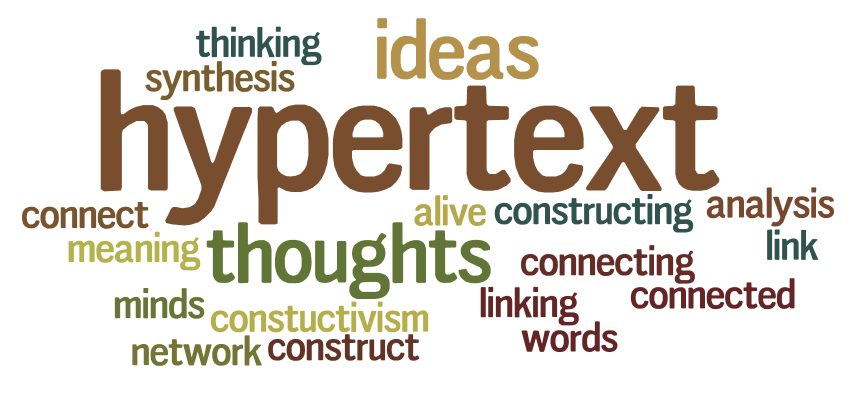With the emergence of hypertext in the late 1980’s and early 1990’s, it was seen as both the end of print culture as well as a precursor for the future of how information would be viewed and consumed on the web. In a sense, it served as a bridge from how we used to read information, both fictional and factual, to how we currently do so.
Hypertext certainly allows for the opportunity to express in ways which are limited by print. Shelley Jackson states in regards to her work Patchwork Girl that she thinks in things arranged in a place, and the use of hypertext allows for her to create in a way that is more conducive to her creative method. Additionally, the in class reading of “afternoon, a story” exemplified how many pathways one may take while reading a work of hypertext fiction. While navigating through the story, the reader may gain a plethora of different perspectives based on how they choose to navigate through the story in a way that is clear and concise, something that is not possible with a printed work.
While social media has pushed aside the use of hypertext as of late, the re-emergence of hypertext through platforms such as Twine has allowed for authors to re-explore how hypertext can be used to form an intriguing story through a simple and usable interface. Furthermore, web users familiarizing themselves with social media has in turn familiarized them with hypertext. Referring back to Shelley Jackson, she states:
“Regular web-users already understand implicitly how to read a hypertext; they may not be accustomed to thinking about what they’ve just read as akin to novels and stories, but they will”.
The concept of how hypertext works is a familiar concept understood by the common web-user, which in turn will allow for non-linear storytelling through hypertext to regain prominence in today’s world.
Sources: “Stitch Bitch: The Hypertext Author As Cyborg-Femme Narrator”, Mark Amerika
